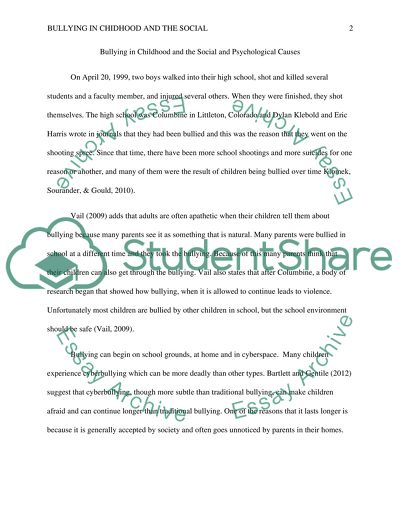Cite this document
(“Bullying Research Paper Example | Topics and Well Written Essays - 1250 words”, n.d.)
Bullying Research Paper Example | Topics and Well Written Essays - 1250 words. Retrieved from https://studentshare.org/psychology/1474382-bullying
Bullying Research Paper Example | Topics and Well Written Essays - 1250 words. Retrieved from https://studentshare.org/psychology/1474382-bullying
(Bullying Research Paper Example | Topics and Well Written Essays - 1250 Words)
Bullying Research Paper Example | Topics and Well Written Essays - 1250 Words. https://studentshare.org/psychology/1474382-bullying.
Bullying Research Paper Example | Topics and Well Written Essays - 1250 Words. https://studentshare.org/psychology/1474382-bullying.
“Bullying Research Paper Example | Topics and Well Written Essays - 1250 Words”, n.d. https://studentshare.org/psychology/1474382-bullying.


